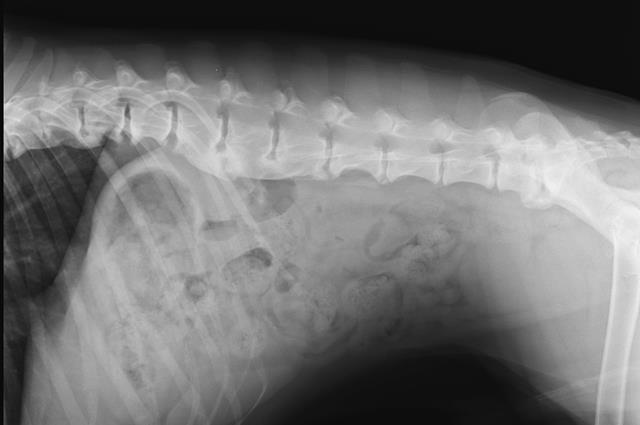Content Attributes
Spondylosis is a spine disorder in which bony spurs or osteophytes develop on the outer edge of the spinal bones. Many dogs are symptomless, but if the degeneration touches the nerves in that area of the spine, the dog may feel varying degrees of pain.
However, pain is not the only reason to be worried about Spondylosis. The disorder can impair mobility, especially when bony spurs join the vertebrae of the spinal column. So, let’s take a closer look at the disease’s causes, signs, diagnosis, treatment, and management.
Causes Of Spondylitis In Dogs
Several factors may increase the likelihood of this condition developing. Previous infections, such as UTIs, abscesses, and infected wounds, can migrate to the spinal column and continue to spread unnoticed during treatment. Traumatic injuries that cause bone damage or fractures can make it easier for bacteria to infiltrate the skeletal frame.
Other factors, such as chronic dental problems or post-operative conditions, may increase the likelihood of this form of infection occurring. Spondylitis is more common in German Shepherd and Great Dane breeds than in other breeds.
Spondylosis Symptoms In Dogs
Spondylosis signs do not appear depending on the seriousness of the disease, and it may go untreated for the rest of a dog’s life. In certain cases, bone spurs may become too close to a nerve, causing pain or injury. Typical spondylosis signs include:
- Stiffness
- Sensitivity to touch
- Back pain
- Growths throughout the spine that you can feel
- Limping
- Restricted mobility and rotation
Spondylosis Diagnoses
Your veterinarian will use X-rays to diagnose spondylosis because the distinctive bone spurs are clearly visible on X-rays. If your veterinarian suspects spinal cord injury or nerve inflammation, they may also prescribe advanced imaging. An MRI or CT scan will rule out other problems and ensure that the right treatment is provided.
How Is Spondylosis Treated?
Treatment guidelines are based on the individual dog and whether or not it is displaying health symptoms.
Most dogs with spondylosis deformans tend to be pain-free, and care is not needed in these cases. Nonsteroidal anti-inflammatory drugs (NSAIDs) or other analgesics can provide relief if the pet appears to be in pain. In certain cases, physical therapy, weight loss, and supervised exercise programs can be beneficial.
In rare circumstances, the osteophytes can cause spinal cord compression, and surgery to remove them may be necessary.
How Massage May Help?
Canine massage can substantially improve or control the symptoms of spondylosis in dogs, including:
- Are an effective, natural means of pain control
- Addresses areas of defensive muscle splinting
- Reduces areas of overcompensation
- Addresses and relieves severe pain
- Relieves stiffness
- Improves flexibility
- Maintains or increases joint movement
- Restores spine resilience by treating myofascial discomfort and trigger points which are commonly known to mimic symptoms of the disease
- Helps to improve posture and gait
Care And Management
Depending on the seriousness of your dog’s symptoms, your doctor will schedule follow-up progress checks. Offer pain medicine only when your dog is in pain (and only after a meal), and only in the actual amount prescribed by your veterinarian, unless they instruct you otherwise.
One of the most common causes of accidental deaths in pets is drug/medication overdose. You must have a healthy and quiet resting area for your dog, away from other pets and active children. During this time, your dog can just go for slow walks in the neighborhood. When your dog has displayed no signs of distress for many weeks, he or she may be gradually restored to normal activity.
Get the i-STAT is a cartridge-based analyzer that contains all of the analytical criteria for performing a test within a single cartridge.
